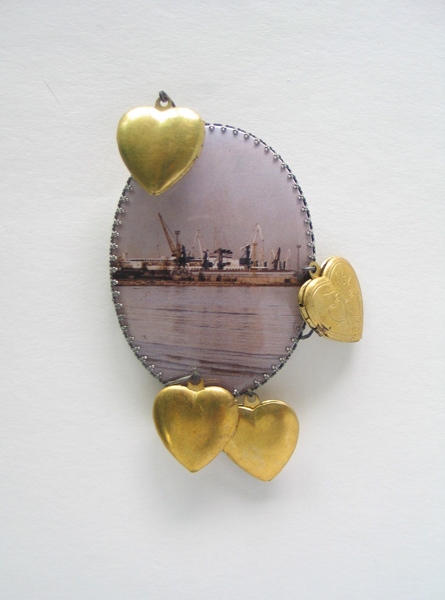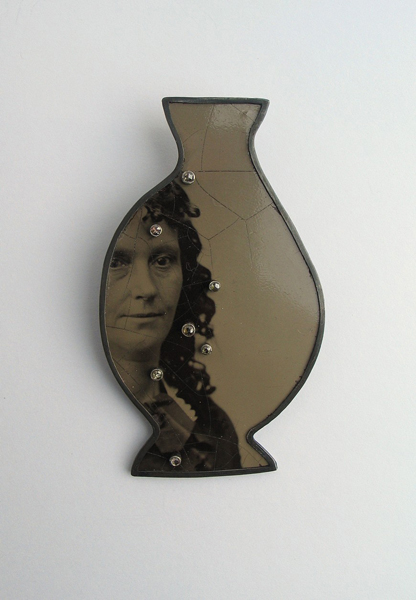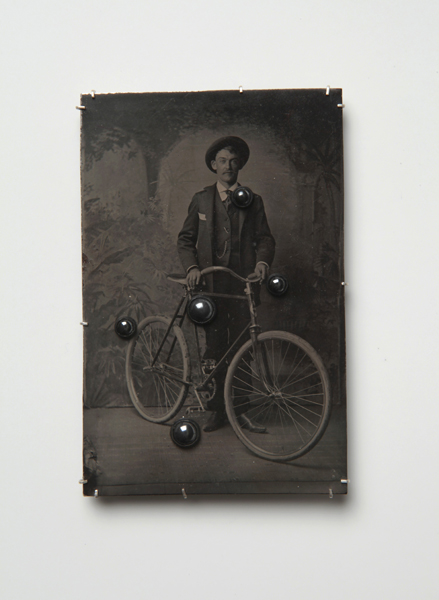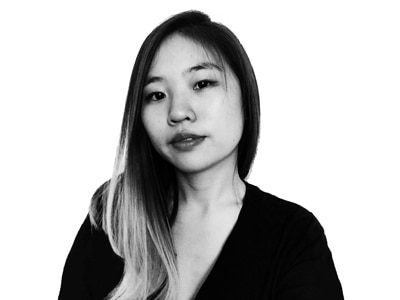
Bettina Speckner: Thomas contacted me via email. When he told me that he had the idea to start a gallery of contemporary jewelry in Sao Paulo, I was of course interested and also fascinated by his brave idea. I was in Brazil 25 years ago for six months, and I had my very first solo exhibition there.
You were studying painting before you transferred to the jewelry department and studied under Otto Künzli and Hermann Jünger. How has this background influenced your work?
Bettina Speckner: I think it still does. My way of seeing is maybe with a painter’s eye—my jewelry pieces rarely are three-dimensional, and everything happens on a two-dimensional surface. Maybe even my use of imagery comes from there. It gives me the possibility to play.

Bettina Speckner: Thomas contacted me via email. When he told me that he had the idea to start a gallery of contemporary jewelry in Sao Paulo, I was of course interested and also fascinated by his brave idea. I was in Brazil 25 years ago for six months, and I had my very first solo exhibition there.
You were studying painting before you transferred to the jewelry department and studied under Otto Künzli and Hermann Jünger. How has this background influenced your work?
Bettina Speckner: I think it still does. My way of seeing is maybe with a painter’s eye—my jewelry pieces rarely are three-dimensional, and everything happens on a two-dimensional surface. Maybe even my use of imagery comes from there. It gives me the possibility to play.
The recent Vase-pieces come from sketches of a vase form. A vase is something very sculptural as well.

In your work, there is a very careful selection and juxtaposition of specific objects with photographs. How do you choose or find these objects?
Bettina Speckner: I find them everywhere; I am a big collector of everything.
First, every piece stands on its own, then the pieces find each other by themselves. Why I combine certain things, I don’t know. For me they make a sense of their own, which can’t be retold
The images you use are often ferrotypes, which are simultaneously image and object, unlike the digital images that flood our everyday lives. Why use ferrotypes now?
Bettina Speckner: For me, it’s totally irrelevant if they are old or new (there are no new ferrotypes, I fear). The interesting thing is that they are made out of metal, and somehow my understanding of jewelry has to do with metal.
I am interested in them because they are unique objects, and as there is no negative, they cannot be reproduced. I am interested in the graphical qualities, the composition, the posture of the figure, the glance of a portrait, the spots on the metal…

Bettina Speckner: Wow, where does inspiration come from? I am not at all a conceptual worker. The pieces somehow have lives of their own, and they need some time—eventually, constellations appear, and I just capture the moment when it feels right. That can happen right away or it can take years.
There is one brooch in which a bright red coral overlaps the black and white image of a woman, almost overwhelming her. Does coral function as a personal symbol for you?
Bettina Speckner: Coral holds meanings and symbols, and I try to treat things in a way that allows them to stay open to everybody’s own interpretations and ideas, feelings, and associations. I am not telling concrete stories, but giving you access to your own story.

Bettina Speckner: Nothing. I use images like I use gemstones. Stones also tell a story, just like gold, a photo of a bench, or a piece of coral does. So I mix words, materials, images…
You recently participated in the exhibition at MAD called Multiple Exposures: Jewelry and Photography. What was your impression of the exhibition, and did you observe anything in particular or learn anything from it?
Bettina Speckner: I was surprised how many jewelers have worked with or do work with photography. I had no idea.
I was also happy to see Otto Künzli’s work from 1976, the series of Automatenfotos made in a photo booth. That series was one of the crucial reasons I started making jewelry.
Have you read, seen, or heard anything of interest lately?
Bettina Speckner: I have to admit that my year was so busy (luckily). I had the exhibition in the Schmuckmuseum Pforzheim with Daniel Spoerri and the participation in the MAD, and my short visit to New York was very exciting and inspiring—and the year just kept running on like this. In the summer, I gave a workshop in Northern Ireland and stayed there to hike for some days with my husband. The rough, windy, empty landscape opened up my mind again and somehow freed my view. Beautiful.
INDEX IMAGE: Bettina Speckner, Brooch, 2013, photo etching in zinc, silver, gold, 67 x 55 mm, photo: artist




